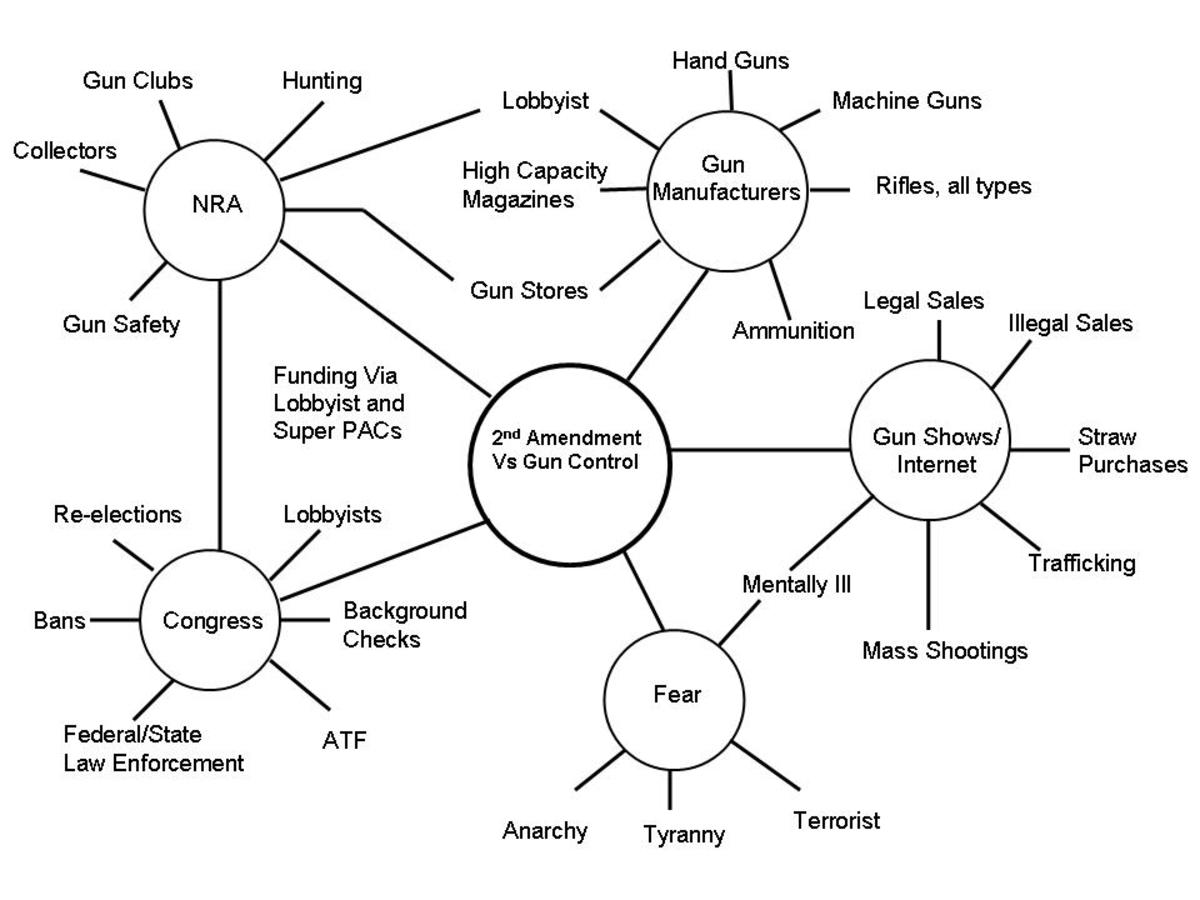The 2nd Amendment
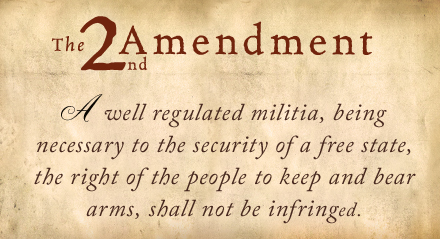
The Right to Bear Arms
In the aftermath of the massacre in Newtown, Connecticut, there is much debate about guns rights filling the airwaves these days. Anti-Gun advocates are stressing that there needs to be limits on what type of guns should be allowed in the United States. Guns Rights advocates are claiming that infringement on the rights of law abiding citizens is not the answer to keep us safe. But what this question really stems down to is the roll of the Constitution and the 2nd Amendment. The Country must ask some tough questions. What does the 2nd Amendment mean? What role does the 2nd Amendment have in American society today?
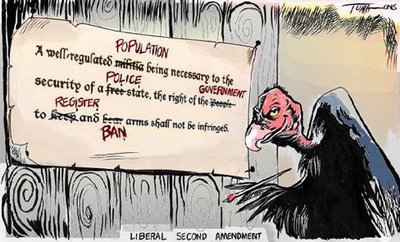
Start with the Constitution
The 2nd Amendment to the United States Constitution states:
A well regulated Militia, being necessary to the security of a free State, the right of the people to keep and bear Arms, shall not be infringed.
A fairly simple sentence that causes so much debate. Yet, the history of the right to bear arms is often times forgotten. The right to bear arms is not an American invention. The 2nd Amendment stems from the English Bill of Rights. The English Bill of Rights states "That the Subjects which are Protestants may have Arms for their Defence suitable to their Conditions and as allowed by Law." As allowed by law, interesting sentence. Like the American Constitution and Bill of Rights, the English Bill of Rights was not granting rights but recognizing a natural right that cannot be taken away by the Government. But the predecessor of the 2nd Amendment recognized both guns rights and gun regulation. Something today's conservatives often times forget.
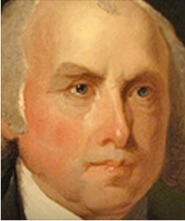
The Early Drafts
Many on both sides of the arguments try to claim what the founder's intent was when drafting the 2nd Amendment. One way this can be done is by looking at the early drafts of the document. On July 21, 1776, James Madison and the committee selected to draft the Bill of Rights made the following proposal for the 2nd Amendment:
A well regulated militia, composed of the body of the people, being the best security of a free State, the right of the people to keep and bear arms shall not be infringed; but no person religiously scrupulous shall be compelled to bear arms. (See http://constitution.org/mil/militia_debate_1789.htm)
What is interesting when looking at the early drafts and the motions by the various states, the argument was not about an individual right to arms. Instead, the argument was whether the United States should have a standing army or whether militias would suffice. This is why the final and adopted draft of the amendment begins by discussing the importance of of a "well regulated" militia. The 2nd Amendment was a compromise between the Federalists and the Anti-Federalists to ensure that the new power of the Central Government did not overstep its bounds by recognizing a collective right to militias and the right for the people to bear arms to form them. .
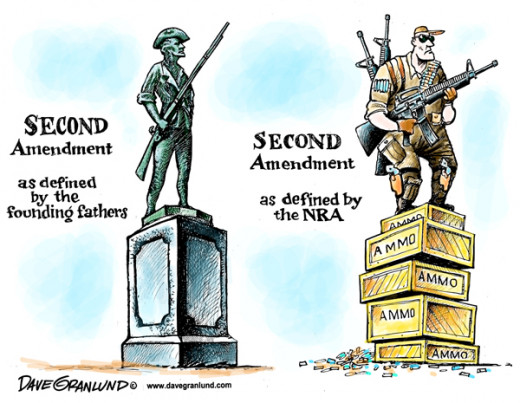
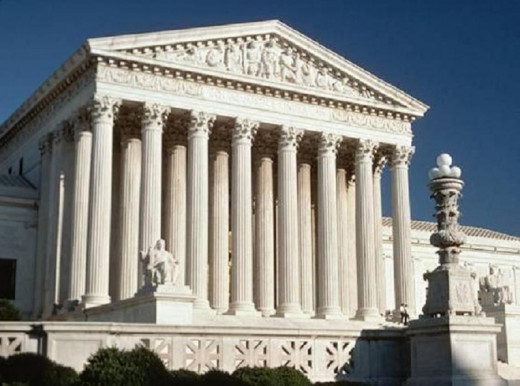
The Supreme Court
The adoption of the 2nd Amendment was meant to preserve State's rights over the power of the federal government by ensuring that existence of militias. In short, the purpose of the 2nd Amendment was for the community as a whole, and not any particular individual. Since its adoption, the 2nd Amendment has been debated before the Supreme Court and for most of this time the 2nd Amendment was viewed from the community standpoint and not the individuals.
In 2008, in District of Columbia v. Heller, 554 U.S. 570 (2008), the Supreme Court held that the 2nd Amendment does protect an individual right to possess a firearm unconnected with service in any militia and to use the gun for traditionally lawful purposes. The Court explained that the opening clause simply offered a purpose and should not be interpreted to limit or expand the right.
But what gun rights advocates appear to forget is that even the majority in the Heller case does not argue that the right is absolute. Justice Antonin Scalia, writing for the majority, stated:
"Although we do not undertake an exhaustive historical analysis today of the full scope of the Second Amendment, nothing in our opinion should be taken to cast doubt on longstanding prohibitions on the possession of firearms by felons and the mentally ill, or laws forbidding the carrying of firearms in sensitive places such as schools and government buildings, or laws imposing conditions and qualifications on the commercial sale of arms."
The Heller case is the landmark case on the 2nd Amendment and oddly, does very little to settle the dispute. The Court recognized that the 2nd Amendment is an individual right but at the same time that it can be regulated.

What is the Answer?
Where is the compromise on gun rights? Did the founders really intend of everyone having a right to own an automatic assault weapon that can wipe out classrooms in a matter of seconds? Probably not. But the founders were clear that they believed that individuals having weapons was important to protect the community as a whole.
But it is important to note that at the time James Madison proposed "the right to bear arms" to ensure the survival of militias there were no police forces. There were no automatic weapons. There were not 30 round clips. Perhaps looking at what the purpose of the 2nd Amendment is better than the actual text. The founders wanted to protect the survival of the State. They were concerned with safety. And it is hard to claim that they would want a country were everyone was armed without any community purpose in mind was their intent.





